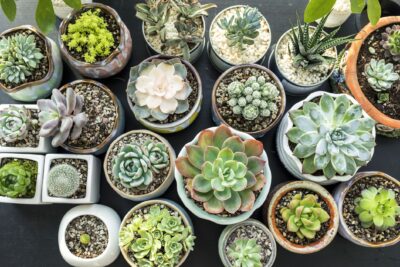
Discover the Snake Plant Lookalike: Which Succulent Resembles it?
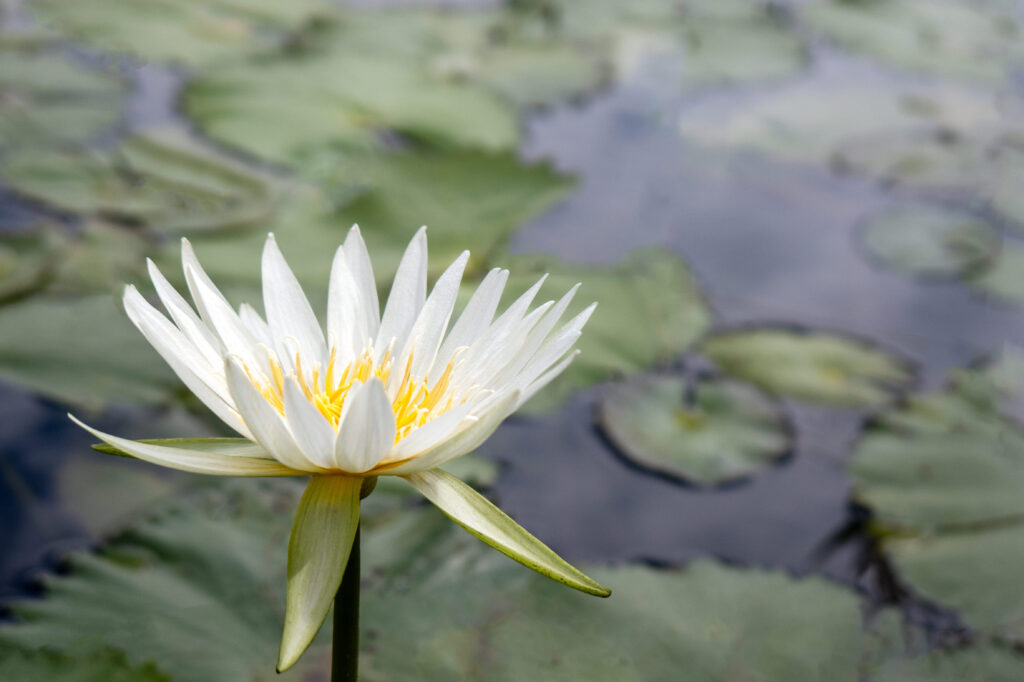
The Snake Plant, also known as Sansevieria, is a popular houseplant known for its striking long, sword-shaped leaves and low maintenance requirements. With its ability to thrive in various light conditions and withstand neglect, it has become a favorite among plant enthusiasts. However, there are other succulents that closely resemble the Snake Plant, offering a similar aesthetic appeal and easy care.
We will explore some succulents that resemble the Snake Plant and discuss their similarities and differences. We will look at their leaf shape, growth habit, and care requirements. Whether you are a fan of the Snake Plant and want to find a lookalike to add variety to your collection, or if you are simply looking for a low-maintenance succulent that looks similar to the Snake Plant, this article will help you discover some great alternatives. So, let's dive in and explore the world of Snake Plant lookalike succulents!
- The Zebra Plant closely resembles the Snake Plant
- The Haworthia plant has a similar appearance to the Snake Plant
- The Aloe Vera plant is often mistaken for the Snake Plant
- The Gasteria plant has a similar rosette-shaped arrangement of leaves like the Snake Plant
- The Sansevieria cylindrica, also known as the Cylindrical Snake Plant, is a close lookalike
- The Dracaena trifasciata, commonly called the Mother-in-Law's Tongue, is often confused with the Snake Plant
- The Agave attenuata, also known as the Foxtail Agave, shares similarities with the Snake Plant
- Frequently Asked Questions
The Zebra Plant closely resembles the Snake Plant
If you are a fan of the Snake Plant (Sansevieria), you'll be thrilled to discover a succulent that closely resembles it - the Zebra Plant (Haworthia fasciata). With its unique patterned leaves and low-maintenance nature, the Zebra Plant is a great alternative for those looking to add a touch of greenery to their indoor space.
The Zebra Plant gets its name from the zebra-like stripes that adorn its thick, fleshy leaves. These stripes are a result of the plant's adaptation to its natural habitat, where it grows in shady areas with dappled light. The contrasting white stripes against the dark green background make it a visually striking succulent.
Like the Snake Plant, the Zebra Plant is known for its ability to purify the air by removing toxins, such as formaldehyde and benzene. It releases oxygen at night, making it an ideal choice for bedrooms or any other space where you spend a significant amount of time.
When it comes to care, the Zebra Plant is relatively easy to maintain. It thrives in well-draining soil and prefers bright, indirect light. However, it can also tolerate lower light conditions, making it suitable for areas with less natural light. It is important to avoid overwatering the plant, as it is susceptible to root rot. Allow the soil to dry out between waterings and ensure the pot has proper drainage.
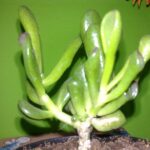 Is Shrek's Ear Succulent a Real Plant or Just a Myth?
Is Shrek's Ear Succulent a Real Plant or Just a Myth?Propagation of the Zebra Plant is similar to that of the Snake Plant. You can easily propagate it by separating the offsets that grow from the base of the plant. These offsets can be replanted in their own pots, allowing you to expand your collection or share the beauty of this succulent with others.
Whether you're a fan of the Snake Plant or simply looking for a new addition to your succulent collection, the Zebra Plant is an excellent choice. With its striking appearance and easy care requirements, it is sure to bring beauty and freshness to your indoor space.
The Haworthia plant has a similar appearance to the Snake Plant
The Haworthia plant is often mistaken for the Snake Plant due to its similar appearance. Both plants have thick, fleshy leaves that give them a succulent-like appearance. However, there are some key differences between the two that make them unique in their own ways.
1. Leaf Structure
The leaves of the Haworthia plant are usually smaller and more compact compared to the Snake Plant. They are often triangular-shaped and have distinct ridges or bumps on the surface, giving them a textured look. In contrast, the Snake Plant's leaves are elongated and sword-shaped, with smooth edges.
2. Growth Pattern
Another noticeable difference is the growth pattern of these plants. While the Snake Plant tends to grow vertically, with leaves rising upright from the center, the Haworthia plant often grows in a rosette-like form. Its leaves radiate outward from a central point, creating a more compact and clustered appearance.
3. Flowering
Both the Snake Plant and the Haworthia plant can produce flowers, but the flowering habits differ. The Snake Plant is known for its tall flower stalks, which can reach impressive heights and bear clusters of small, fragrant white flowers. On the other hand, the Haworthia plant produces shorter flower stalks with smaller, tubular-shaped flowers that range in color from white to pink.
 Locating Desert Plants: A Guide to Finding Cacti and Succulents Nearby
Locating Desert Plants: A Guide to Finding Cacti and Succulents Nearby4. Care Requirements
In terms of care, both plants are relatively low-maintenance and can thrive in similar conditions. They prefer bright, indirect light and well-draining soil. However, it's important to note that the Haworthia plant is more sensitive to overwatering compared to the Snake Plant. It's best to allow the soil to dry out between waterings to prevent root rot.
While the Haworthia plant may resemble the Snake Plant at first glance, its unique leaf structure, growth pattern, flowering habits, and care requirements set it apart. Whether you choose the Snake Plant or the Haworthia plant, both make excellent additions to any indoor garden or collection of succulents.
The Aloe Vera plant is often mistaken for the Snake Plant
When it comes to houseplants, the Snake Plant is known for its striking, upright leaves and low maintenance requirements. However, there is another succulent that often gets mistaken for the Snake Plant - the Aloe Vera plant.
The resemblance between the Aloe Vera plant and the Snake Plant is not surprising. Both plants have long, slender leaves that grow in a rosette pattern. The leaves of the Aloe Vera plant are also thick and fleshy, just like the Snake Plant. This similarity in appearance can lead to confusion, especially for those who are new to the world of succulents.
While the Aloe Vera plant may resemble the Snake Plant, there are a few key differences that can help you tell them apart. One of the most noticeable differences is the color of their leaves. The Snake Plant typically has dark green leaves with yellow variegation, while the Aloe Vera plant has green leaves with white spots or streaks.
Another distinguishing feature is the texture of the leaves. The leaves of the Snake Plant are smooth and glossy, whereas the leaves of the Aloe Vera plant have a rough, bumpy texture.
In terms of care, both plants are relatively easy to maintain, making them popular choices for indoor gardens. However, the Aloe Vera plant requires more frequent watering compared to the Snake Plant. Aloe Vera plants prefer well-draining soil and should be watered when the top inch of soil feels dry. On the other hand, Snake Plants are known for their drought tolerance and can go weeks without water.
 Finding and Cultivating the Elusive Queen of the Night Succulent
Finding and Cultivating the Elusive Queen of the Night SucculentBoth the Snake Plant and the Aloe Vera plant offer unique benefits to plant enthusiasts. The Snake Plant is well-known for its air-purifying properties, while the Aloe Vera plant is treasured for its medicinal uses. Aloe Vera gel, extracted from the leaves, is often used to soothe burns and promote healing.
Whether you choose to grow a Snake Plant or an Aloe Vera plant, both succulents will bring beauty and charm to your indoor space. Just remember to pay attention to the subtle differences in appearance and care requirements to ensure the health and happiness of your plant.
The Gasteria plant has a similar rosette-shaped arrangement of leaves like the Snake Plant
The Gasteria plant is often considered a lookalike of the Snake Plant due to its similar rosette-shaped arrangement of leaves. This succulent, also known as Gasteria verrucosa, belongs to the Asphodelaceae family and is native to South Africa.
Like the Snake Plant, the Gasteria plant is a popular choice for indoor gardening due to its low maintenance requirements and ability to thrive in various light conditions. It features thick, fleshy leaves that grow in a spiral pattern, forming a beautiful rosette shape.
One distinctive feature of the Gasteria plant is its unique leaf texture. The leaves have a rough, pebbled surface with raised white spots or warts, giving them an interesting and visually appealing look. This texture sets it apart from the smooth and sleek leaves of the Snake Plant.
Another similarity between the Gasteria plant and the Snake Plant is their ability to tolerate neglect and low light conditions. Both plants are known for their resilience and can survive in environments with minimal sunlight or irregular watering.
The Gasteria plant also produces attractive and delicate flowers, although they are less common compared to the Snake Plant. The flowers bloom on long stalks and come in various shades of pink, white, or reddish-orange, adding a touch of color to the plant's overall appearance.
 Identifying the Succulent: What Type Is It?
Identifying the Succulent: What Type Is It?If you're a fan of the Snake Plant and looking for a similar plant to add to your collection, the Gasteria plant is definitely worth considering. Its rosette-shaped arrangement of leaves, unique texture, and ability to thrive in low light conditions make it an excellent choice for any indoor garden.
The Sansevieria cylindrica, also known as the Cylindrical Snake Plant, is a close lookalike
If you're a fan of the Snake Plant but are looking for a succulent that resembles it, then the Sansevieria cylindrica is the perfect choice. Also known as the Cylindrical Snake Plant, this succulent has a striking resemblance to the popular Snake Plant, making it a great alternative for those who want something similar but with a unique twist.
The Sansevieria cylindrica features long, cylindrical leaves that grow upright from the base. These leaves have a smooth, dark green color and are adorned with light gray-green bands that give them a distinctive appearance. The cylindrical shape of the leaves sets it apart from the flat, sword-like leaves of the traditional Snake Plant, adding an interesting visual element to any indoor or outdoor space.
Like its Snake Plant counterpart, the Sansevieria cylindrica is a low-maintenance succulent that thrives in a variety of conditions. It can tolerate a wide range of light levels, from bright indirect light to low light, making it ideal for both well-lit areas and dim corners of your home or office.
This succulent is also known for its ability to withstand neglect and drought, making it a great choice for busy individuals or those new to plant care. It has a natural resilience to drought and can survive long periods without water, making it a perfect option for forgetful plant owners.
How to Care for the Sansevieria cylindrica
To ensure the health and vitality of your Sansevieria cylindrica, here are some care tips:
- Light: Place your Sansevieria cylindrica in a location with bright, indirect light. While it can tolerate low light conditions, it will thrive best with moderate to bright light.
- Water: Allow the soil to dry out completely between waterings. This succulent is drought-tolerant and prefers infrequent watering rather than being constantly moist.
- Temperature: The Sansevieria cylindrica can tolerate a wide range of temperatures, but it prefers temperatures between 60-85°F (15-29°C). Avoid exposing it to frost or extreme heat.
- Soil: Use a well-draining soil mix specifically formulated for succulents and cacti. This will prevent waterlogging and root rot.
- Fertilizer: Feed your Sansevieria cylindrica with a balanced houseplant fertilizer diluted to half strength during the growing season (spring and summer). Avoid fertilizing during the winter months.
With proper care, your Sansevieria cylindrica will continue to thrive and display its unique snake plant-like qualities. Enjoy the beauty and resilience of this captivating succulent!
 Decoding Succulents' Red Edges: A Comprehensive Analysis
Decoding Succulents' Red Edges: A Comprehensive AnalysisThe Dracaena trifasciata, commonly called the Mother-in-Law's Tongue, is often confused with the Snake Plant
The Dracaena trifasciata, commonly known as the Mother-in-Law's Tongue, is a succulent plant that is often mistaken for the Snake Plant. These two plants share many similarities in terms of appearance, but they belong to different plant families.
The Mother-in-Law's Tongue is characterized by its long, upright leaves that are thick and fleshy. The leaves are typically green with yellow or white variegation, giving it a striking and decorative appearance. This plant can grow up to several feet tall and is known for its durability and ability to thrive in various environmental conditions.
Similarly, the Snake Plant, scientifically known as Sansevieria trifasciata, features long, sword-shaped leaves that are also thick and succulent. The leaves of the Snake Plant are usually dark green with light green horizontal stripes, which add to its unique aesthetic appeal. Like the Mother-in-Law's Tongue, the Snake Plant is a hardy plant that can withstand neglect and low light conditions.
Despite their similarities, there are a few distinguishing characteristics that can help differentiate these two plants. The main difference lies in their growth habit and leaf arrangement. While the Mother-in-Law's Tongue has leaves that grow in an upright fashion, the Snake Plant's leaves grow in a rosette pattern, forming a cluster that emerges from the soil.
Another notable difference is the flower appearance. The Mother-in-Law's Tongue produces small, fragrant white flowers that bloom on a long stalk, while the Snake Plant rarely flowers, and if it does, the flowers are small and greenish-white in color.
In terms of care, both plants are relatively low-maintenance and can survive in various light conditions, although they prefer bright, indirect sunlight. They also have similar watering requirements, preferring infrequent watering to avoid waterlogged soil.
 Can You Identify These Gorgeous Succulents?
Can You Identify These Gorgeous Succulents?Overall, while the Mother-in-Law's Tongue and the Snake Plant may look alike at first glance, a closer examination reveals distinct differences in their growth habit, leaf arrangement, and flower characteristics. Regardless of the similarities and differences, both plants are excellent choices for adding a touch of greenery and elegance to any indoor space.
The Agave attenuata, commonly known as the Foxtail Agave, is a succulent plant that bears a striking resemblance to the popular Snake Plant. While these two plants belong to different botanical families, they share similar characteristics that make them look like long-lost siblings.
One of the most noticeable similarities between the Agave attenuata and the Snake Plant is their architectural form. Both plants feature long, upright leaves that grow in a rosette pattern. These leaves are thick and fleshy, giving them a striking appearance that adds a touch of elegance to any space.
Another common trait shared by these succulents is their ability to thrive in low-light conditions. Just like the Snake Plant, the Agave attenuata is known for its adaptability to a variety of light conditions. Whether placed in a bright corner or a dimly lit room, both plants will continue to thrive and maintain their vibrant green color.
Furthermore, both the Foxtail Agave and the Snake Plant are renowned for their low-maintenance nature. These succulents have evolved to withstand periods of drought, making them perfect choices for busy individuals or those with a less-than-green thumb. They require minimal watering, as their leaves store water, and can tolerate neglect without showing signs of distress.
When it comes to size, the Agave attenuata and the Snake Plant are in a league of their own. While the Snake Plant is known for its compact growth, the Foxtail Agave can reach impressive heights. With its long, arching leaves that can grow up to 4 feet in length, the Agave attenuata adds a touch of drama and grandeur to any indoor or outdoor space.
 Ultimate Guide: Identifying Succulents and Getting the Help You Need
Ultimate Guide: Identifying Succulents and Getting the Help You NeedIn conclusion, if you are a fan of the Snake Plant and want to add a similar-looking succulent to your collection, the Agave attenuata is an excellent choice. With its architectural form, adaptability to low-light conditions, low-maintenance nature, and impressive size, the Foxtail Agave is sure to captivate any plant enthusiast.
Frequently Asked Questions
1. What succulent resembles the Snake Plant?
One succulent that resembles the Snake Plant is the Zebra Plant (Haworthia Fasciata). It has similar spiky leaves with white stripes.
2. How do I differentiate between the Snake Plant and Zebra Plant?
The main difference is in the leaf arrangement. Snake Plant leaves grow upright, while Zebra Plant leaves tend to spread out in a rosette formation.
3. Does the Zebra Plant require the same care as the Snake Plant?
Yes, both plants have similar care requirements. They thrive in well-draining soil, require infrequent watering, and prefer bright indirect light.
 Identifying Signs of Growth in Succulent Plants: A Guide
Identifying Signs of Growth in Succulent Plants: A Guide4. Can I mix Snake Plant and Zebra Plant in the same pot?
Yes, you can mix Snake Plant and Zebra Plant in the same pot. They have similar care needs and can create an interesting contrast with their different leaf patterns.
If you want to read more articles similar to Discover the Snake Plant Lookalike: Which Succulent Resembles it?, you can visit the Identification category.


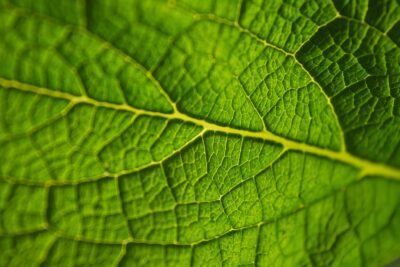
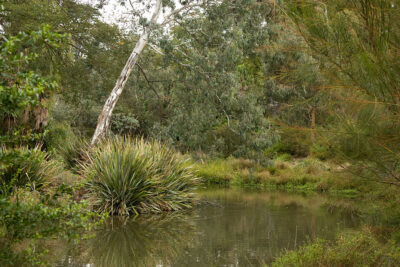

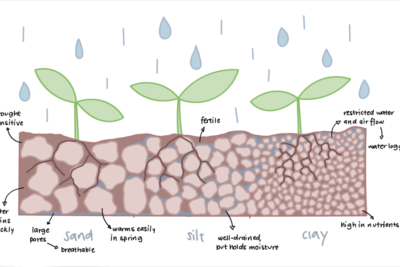
You Must Read